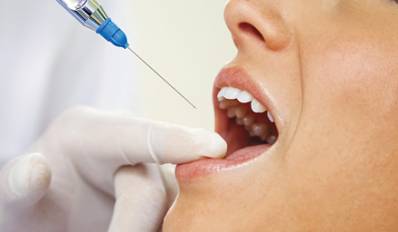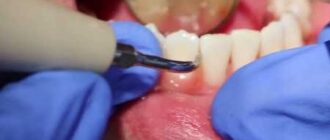Modern dentistry has fundamentally changed how dental treatments are carried out, and dental local anesthetic is one such component. Understanding the fundamentals of dental anesthetic can help patients overcome any anxieties or apprehensions they may have, despite the fact that it may appear terrifying to some. We shall go into the details of dental local anesthetic in this blog, including its advantages, varieties, and methods of administration. Read on to learn all you need to know about this crucial component of dentistry, whether you’re ready for a dental operation or are just curious to find out more about dental anesthesia.
What is Local Anesthesia in Dentistry?
In order to temporarily relieve discomfort during dental operations, local anesthetic is frequently utilized in dentistry. An injection into the inner cheek or gum is used to give the drug. A number of amides, including lidocaine, mepivacaine, bupivacaine, and prilocaine, are used as local anesthetics in dentistry. Procaine and benzocaine esters are no longer utilized in dental procedures.
The way local anesthetic functions is by obstructing the nerves that carry pain signals from the affected location to the brain. Local anesthetic often takes action in less than ten minutes and lasts for 30 to 60 minutes. Although it is a safe procedure, local anesthetic in dentistry may have unintended consequences that should be discussed with the dentist.
Types of Dental Local Anesthesia
Dentists mostly provide block injections and infiltration injections for numbing purposes. Block injections are used to numb the whole mouth, whereas infiltration injections are used to numb more confined, smaller regions.
Moreover, a number of popular local anesthetic medications, like as lidocaine, articaine, prilocaine, mepivacaine, and bupivacaine, are employed in dentistry. All of these medications fall under the category of amide local anesthetics, which are secure, non-irritating, and efficient for dental treatments.
Moreover, local anesthesia can be used in conjunction with other anesthetic techniques, such as sedation or general anaesthetic. These solutions may be employed for longer or more involved treatments as well as to assist individuals who have dental anxiety or phobia.
Before undergoing local anesthetic, it’s crucial to address any allergies or medical concerns with your dentist. Temporary numbness or tingling, minor pain or discomfort, and infrequently an allergic response are all potential side effects. Your dentist may go through these dangers with you and assist you in deciding on the right anesthetic for your requirements.
Most Common Local Anesthetic Used in Dentistry
Lidocaine is the industry standard and most popular local anesthetic in dentistry. Since it was first used in dentistry in 1948, lidocaine has grown to be the most often used local anesthetic. Although there are other drugs available, lidocaine is the most often used local anesthetic to relieve toothache pain. Articaine, prilocaine, mepivacaine, and bupivacaine are some further local anesthetic medications used in dentistry.
An amide anesthetic called lidocaine blocks the nerves in the region of application to impede the transmission of pain signals to the brain. The majority of dental operations can be effectively pain-relieved using lidocaine’s quick onset.
It is significant to highlight that not all patients can get lidocaine because some can have sensitivities or allergies to the drug. Nonetheless, lidocaine is a widely utilized local anesthetic in dentistry for individuals who may safely receive it. It is quite effective.
So, lets summarize:
- Lidocaine
Lidocaine is often used by dentists and anesthesiologists for local or regional anesthesia. It is used to numb the region temporarily before dental treatments such as tooth extraction. Lidocaine is also marketed under the brand names Primla and Asthesia (5 gm). - Other Amide Category Drugs Used in Dentistry
Dental experts employ several amide category medicines for local anesthetic in addition to lidocaine. Mepivacaine, bupivacaine, and prilocaine are examples of these. - Articaine with Epinephrine Combination
Another combination medication used by dental practitioners for local anesthetic is articaine with epinephrine. It is a quick-acting local anesthetic that can numb the mouth before a dental operation. - The Shift from Novocain to Other Anesthetics
Novocain was once the preferred local anesthetic for dental treatments. Nevertheless, experts today prefer to use alternative medications such as lidocaine, articaine, and bupivacaine. - Local Anesthetics for Temporary Numbing
Before dental operations, local anesthetics are used to temporarily numb the region. This assures that there is no pain during the treatment. It is crucial to remember, however, that local anesthetic has a limited duration. - Bupivacaine
Bupivacaine is a local anesthetic that is more suited for long-term numbness. It has a long duration and is thus excellent for some dental operations. - Considerations When Choosing Local Anesthetics
While selecting the best local anesthetic for a patient, dental practitioners must examine a variety of criteria. These criteria include the kind of treatment, the patient’s medical history, and any allergies or bad reactions to previous anesthetics.
How Does Dental Local Anesthesia Work?
It’s crucial to make sure the patient has as little discomfort or agony as possible throughout dental operations. Here, local anesthesia is useful. Local anesthetic prevents pain signals from reaching your brain by blocking the nerves in a particular location of your mouth.
Dentists do this by injecting an anesthetic solution just next to the nerves that provide the targeted region with feeling. The liquid, commonly referred to as a local anesthetic solution, includes a drug that blocks the nerves in the treatment region.
The two drugs that are most frequently used in dentistry, lidocaine or articaine, are typically found in local anesthetic solutions. To increase the duration of the anesthetic effect, a vasopressor like epinephrine may occasionally be given.
When local anesthetic is administered, it normally starts to work within 10 minutes, and the numbness can persist for up to 60 minutes. The treated region shouldn’t cause the patient any pain or discomfort throughout this period.
It is important to understand that local anesthetic does not cause sleepiness or change awareness levels; rather, it just affects a specific area of the mouth. Throughout the operation, patients stay awake and attentive and are able to converse with their dentists.
How Long Does Dental Local Anesthesia Last?
Knowing how long your local anaesthetic will last is crucial while having dental work done. The length of local anaesthetic varies on a number of variables, including the kind and quantity of anesthetic administered, the procedure’s location, and personal aspects like metabolism and drug sensitivity.
The typical duration of a dental local anesthesia is two to five hours. The tooth will be fully numb for the first one to two hours, but the lips, tongue, and cheeks might experience numbness or tingling for the next three to five hours. On the other hand, certain more recent and potent anesthetics, such as Articaine with Epinephrine, can persist for up to four hours after injection.
It is essential to remember that each person will experience anesthesia differently. While some people may feel numbness that lasts for a long time, others could only have a slight impact or none at all. The proper administration and duration of the anesthetic might be helped by maintaining open lines of communication with your dentist.
It’s crucial to refrain from eating, drinking, or chewing while under the effects of local anesthetic until feeling has fully returned to prevent any unintentional harm brought on by numbness. In order to promote a secure and painless recovery, the dentist will provide advice on the proper post-procedure care.
Possible Side Effects of Local Anesthesia in Dentistry
Patients should be informed of any potential adverse effects even though local anesthetic is a safe and efficient technique to control discomfort during dental operations. The severity of some of these adverse effects might vary, with some being moderate and passing quickly.
Itching, discomfort or soreness where the injection was made, as well as tingling or numbness in the lips, tongue, or cheek, are typical adverse effects of local anesthetic in dentistry. Following the treatment, these side effects often go away on their own within a few hours.
Allergic responses, such as hives, itching, or breathing difficulties, might be less frequent but more severe adverse effects. Although though these reactions are uncommon, people who notice any of these symptoms should contact their dentist right once.
Local anesthetic occasionally results in nerve damage that results in either temporary or permanent numbness. A dentist or medical professional should be contacted right away if you have this uncommon but dangerous adverse effect.
Also, patients need to be aware of any interactions with other prescription drugs or medical conditions. Those having a history of allergies or cardiac issues, for instance, may be more likely to experience difficulties with local anesthetic.
To lessen the chance of complications and ensure the safe delivery of local anesthesia, patients should always provide their dentist a complete medical history and follow all pre- and post-procedure instructions.
Also, it is essential that local anesthetic be administered by a qualified and experienced dentist or dental practitioner. Before having any surgeries, patients should always pick a reputable dental office and enquire about the training and expertise of their dentist.
What about Local anesthesia for the dental hygienist?
There are numerous options for providing dental hygiene therapy, including the use of local anesthesia. Dental hygienists must be versed in pharmacology and anesthetic procedures to ensure effective administration. The Local Anesthesia for the Dental Hygienist Certification Course is designed to give participants a full understanding of these modalities, allowing them to learn and apply them in a range of procedures.
The administration of local anaesthetic is now part of the increased function of dental hygienists, giving patients a more relaxing and effective dental experience. It is essential to remember that local anaesthetic should only be delivered with permission and a prescription from a qualified dentist, under indirect observation.
Injections are the most common method of administering local anaesthesia; the medicine is injected directly into the patient’s inner cheek or gum. Notwithstanding the negative stigma associated with dental treatment, the use of local anesthesia by competent dental hygienists can considerably reduce patients’ suffering and misery. Someone applying for a local anesthetic certification must have current certification in either basic or advanced cardiac life support.
Dental hygienists can provide effective and successful dental care to their patients provided they have the necessary experience and training in local anesthetic.
Cost
Dental local anesthesia is a standard practice used by dentists to numb a particular area of the mouth or face during procedures such as extractions, fillings, and root canals. The cost of local anesthesia by injection usually falls within the original price quote for the dental procedure. However, dental professionals may charge additional fees for more complex procedures that take a longer time or require more anesthetic. On average, dental local anesthesia costs range from $25 to $125, depending on the location and extent of the procedure. As local anesthesia is a routine practice in dental procedures, its cost is generally quite affordable and not something that should be a major concern for patients.







